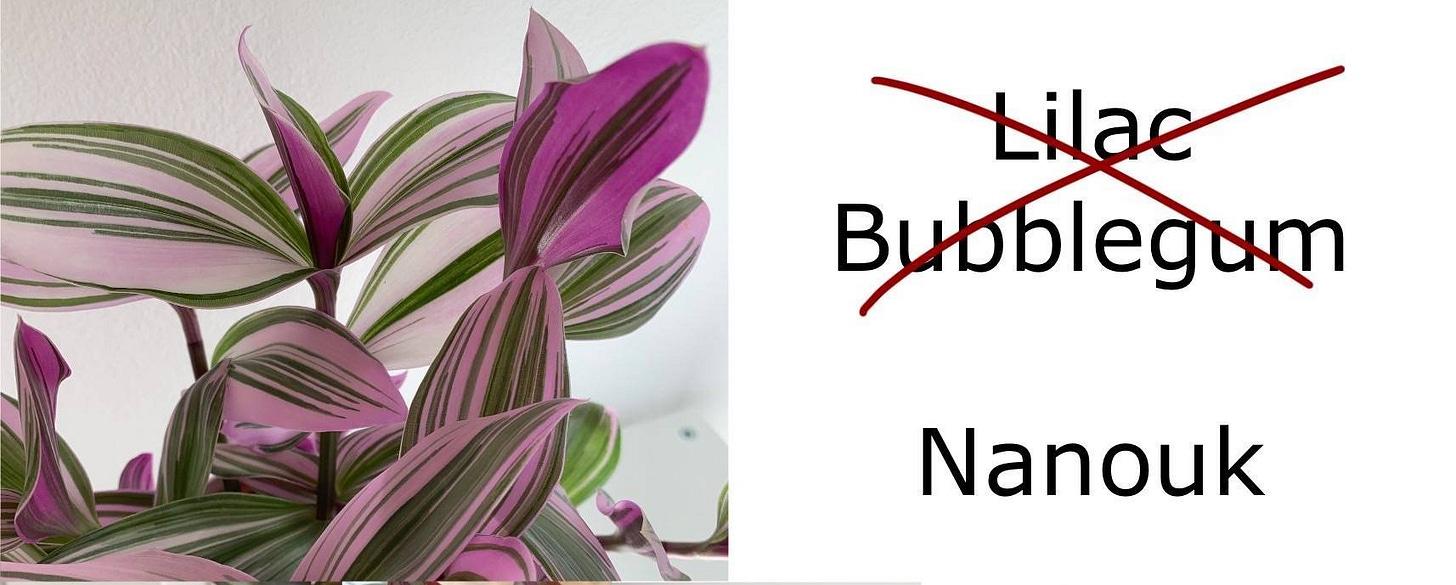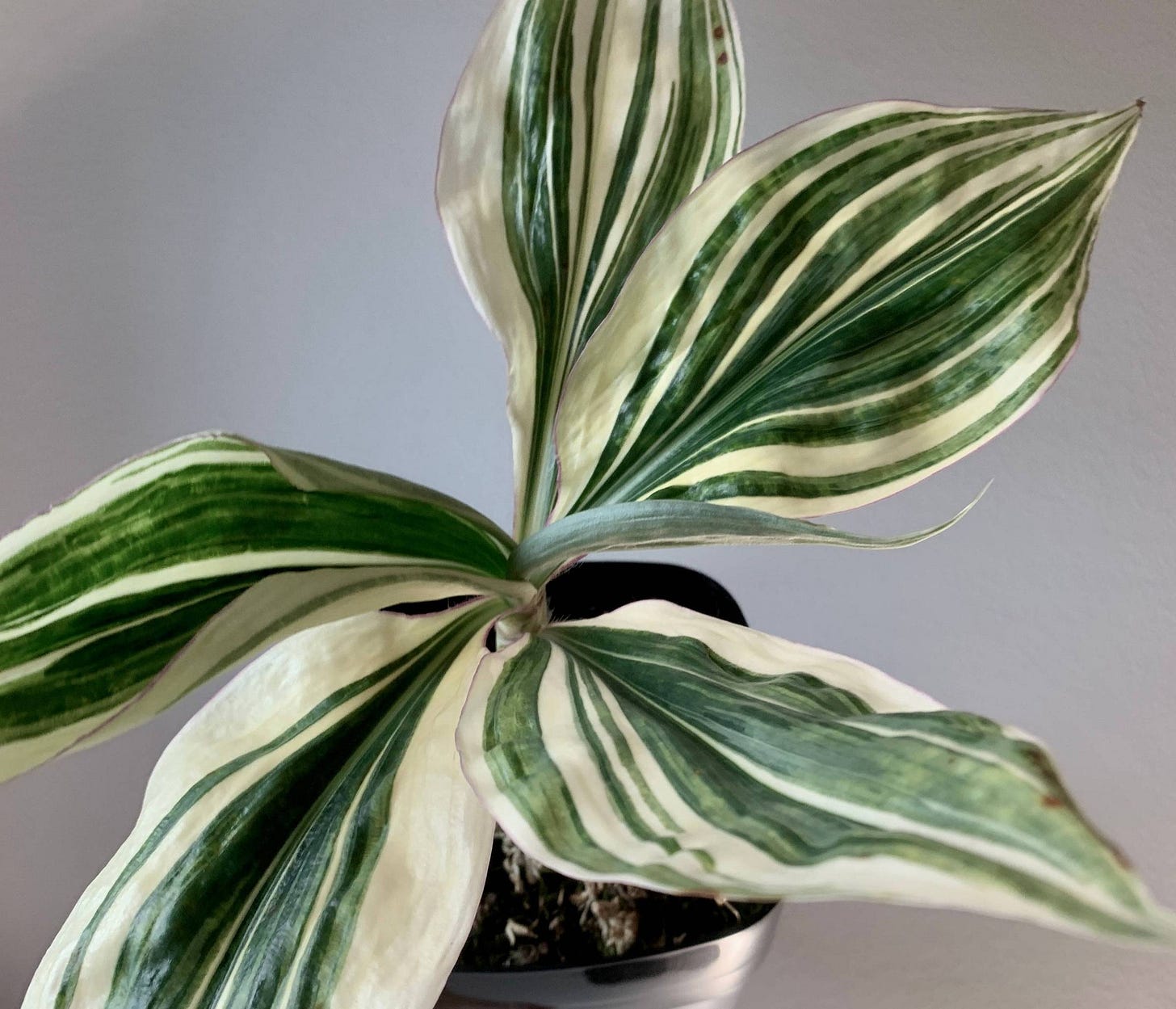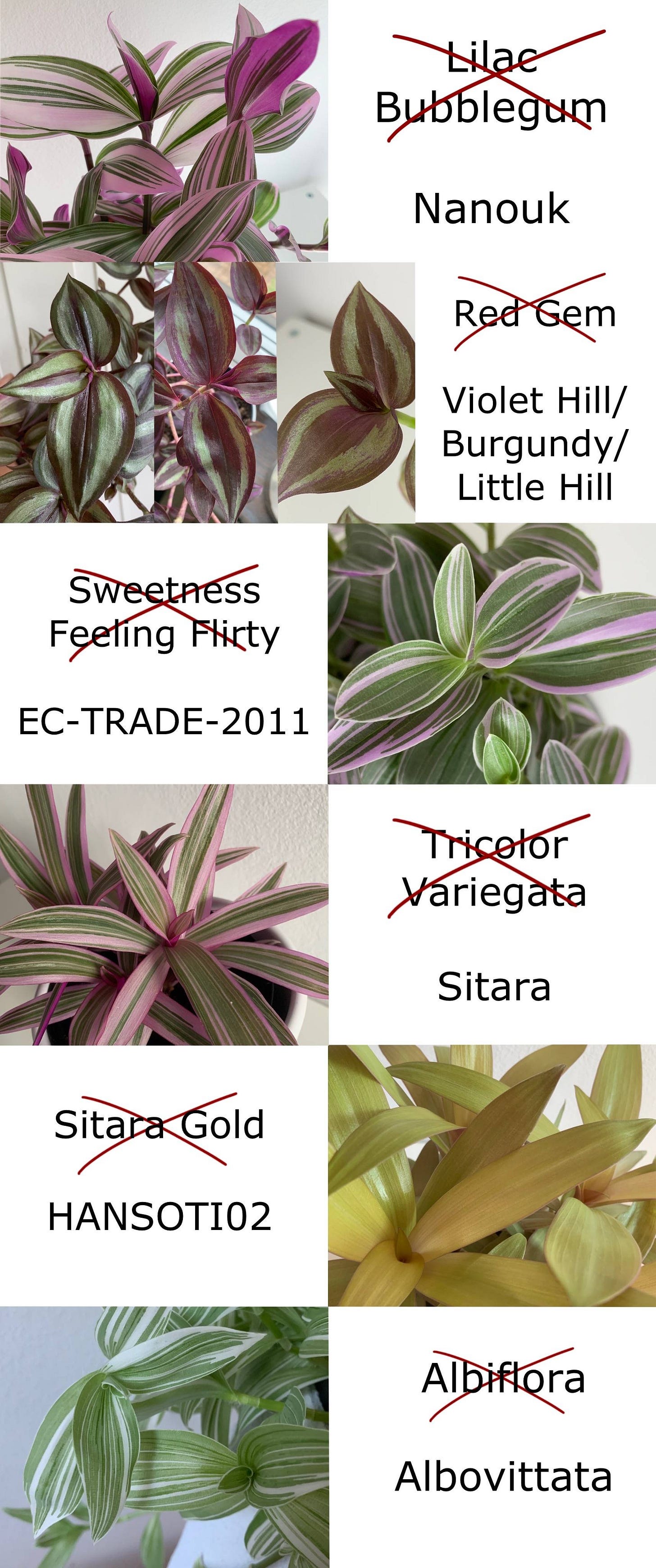Do You Know the Real Names of These Tradescantias?
12 Commonly Mislabeled Tradescantias
Have you ever added a new Tradescantia to your collection, only to later discover it’s not the variety you thought? It happens more often than you’d think! Misnamed Tradescantias are everywhere, and it can be so frustrating when the plant you bought turns out to be something else entirely. It makes identifying your plants and finding accurate care tips even more difficult. But don’t worry—I’m here to help you untangle some of the confusion.
In this week’s newsletter, I’ll guide you through some of the most common naming mistakes. Plus, this week’s Tradescantia Spotlight is on the stunning Zanonia “Mexican Flag”. And if you’ve ever dreamed of filling your workspace with plants, don’t miss the Community Highlight where Florian shares how he turned his office into what he calls the “lab jungle”.
Tradescantia of the Week: Zanonia Mexican Flag
This week, I want to highlight Tradescantia Zanonia, also known as the Mexican Flag. You might also come across it labeled with its botanical synonym, Campelia Zanonia. It’s one of the largest Tradescantias, with leaves that can grow up to 20 cm (about 8 inches) long!
This variety has upright stems that can become thick and bamboo-like, allowing it to grow much taller than most other Tradescantias—up to 1.5 meters (about 5 feet). Its leaves are green with white variegation, and if it gets enough light, the edges develop a striking dark pink colour. When it blooms, it produces small white flowers.
I’ve had my Mexican Flag for about a year now, and I’ll admit—it’s been a bit of a challenge. It hasn’t been easy to keep it happy, mostly because I struggle to give it enough light. On top of that, it managed to get pests, and the treatments didn’t go over too well. But when it’s happy, it’s an absolutely stunning plant!
I also have a green variant of Zanonia, and it’s a completely different story—super easygoing and grows like crazy. It’s fascinating how much the care needs can vary between the two!
Commonly Mislabeled Tradescantias
I often see Tradescantias shared or sold under the wrong names, and it can get pretty confusing! There are so many varieties, and keeping track of all their names isn’t always easy. Charts with pictures of Tradescantias are often used to help identify them, but these can sometimes create more problems. The same plant can look completely different depending on it’s growing conditions, and some Tradescantias are so similar that identifying them just from a picture can be very difficult.
Getting the name wrong isn’t just annoying—it can lead to real confusion. You might buy a plant thinking it’s a specific variety, only to realize later that it’s not what you expected.
It’s also frustrating when these misnames spread because it makes it harder to find accurate information about your plant.
Here’s some of the most commonly misnamed Tradescantias to help clear up some of the confusion.
There are so many more Tradescantias out there with confusing or incorrect names. For example, there’s no such thing as “Albiflora” anymore—that’s just an old name for what we now call Fluminensis. Similarly, “Blossfeldiana” is the outdated name for Cerinthoides.
If you come across a “Pink Joy,” chances are you’ve actually found a Violet Hill. A “Purple Passion”? That’s just another name for Burgundy. Biltmore Bimbo is actually officially named Kartuz Giant.
One particularly confusing one is Pistachio White. It seems to be identical to Albovittata, but it has its own official name: TPIWH01-0.
It’s no wonder Tradescantias can be so hard to identify! Keeping track of the correct names is a challenge, but knowing what you really have in your collection can make all the difference.
Community Highlight
Meet Florian
Florian is a Tradescantia collector originally from Germany, now living in NYC for grad school. With a growing collection of Tradescantias, Florian has created what he calls a “lab jungle” in the research lab where he works. Let’s hear more about his journey!
What’s your favorite Tradescantia and why?
“That’s a tough one! I really like fast-growing Tradescantias, and there are about five that I find special. If I had to pick one, it would probably be Tradescantia Zebrina Quadricolor. It grows fast and has the most beautiful mix of light green, silver, pink, and purple on its leaves.”
Which was your first Tradescantia, and where did you get it?
“My first Tradescantia was a classic—Zebrina Burgundy. It’s much more purple than the Quadricolor and is the one you can find almost anywhere. My first memory of a Tradescantia was when I was 10. My grandmother brought a cutting from Vietnam back to Germany, but I never got a piece of her plant. Years later, when I came to the US for grad school, a colleague in my research lab gave me a cutting of Zebrina—the same variety my grandmother had. It was such a special moment!”
What’s the #1 Tradescantia on your wishlist?
“The top spot on my wishlist isn’t technically a Tradescantia, but another member of the Commelinaceae family, the variegated version of Gibasis Geniculata (Tahitian Bridal Veil). It’s rare and hard to find, but I already have the solid green variety and love how it grows—even though it’s one of the more delicate ones.”
What’s one care tip you swear by for your Tradescantias?
“The best thing I’ve found for keeping my plants pest-free is a systemic plant powder called Bonide Systemic Houseplant Insect Control. I discovered it after battling thrips on my Tahitian Bridal Veil, where all the usual sprays like neem oil didn’t work. For general care, I stick to weekly watering and restart my Tradescantias every 6–12 months by taking cuttings, rooting them in water with plant food, and repotting them.”
Any fun or unexpected stories about your Tradescantias?
“My favorite story starts with a picture I saw that made me dive into the world of Tradescantias. I’d only known about the purple Zebrina my grandma had, but then I saw a Nanouk growing on the streets of NYC, which looked surprisingly similar. That got me wondering if there were more varieties. A quick Google search later, I stumbled on a picture that changed everything. Soon after, I was on eBay and Etsy ordering as many varieties as I could find! Now, I keep all 23 of my Tradescantias in the research lab I work at, and they’ve become a real eye-catcher in what I call my ‘lab jungle.’ Seeing how much they’ve grown in just 12 months has been amazing. It’s been such a fun and rewarding hobby!”
Thank you, Florian, for sharing your story and love for Tradescantias!
Want to be featured in the next newsletter? Send me an email with a picture of your favorite Tradescantia, and I’ll be in touch!
Until next time, happy planting! 🌿
Katja
P.S. Did you know I have a Tradescantia-themed coffee mug? If you love these plants as much as I do, you’ll love this design!








